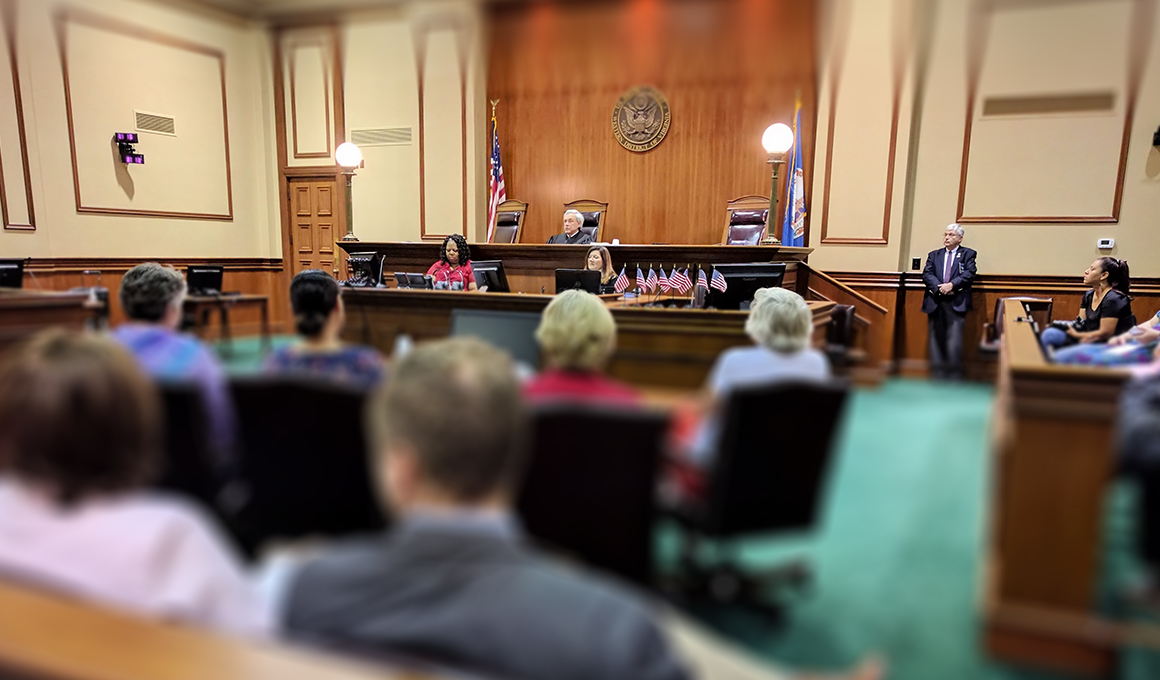Mesmerize the Jury: Necessary Aspects of a Powerful Trial Presentation
Crucial components such as comprehending the target market, crafting a compelling story, and grasping spoken and non-verbal communication are vital components of an efficient discussion. As these factors intertwine, they create a natural strategy that not only educates but likewise involves jurors on multiple degrees.

Understanding Your Audience
Comprehending your target market is a crucial facet of efficient trial discussion. An effective discussion pivots on the capacity to grasp the demographics, values, and predispositions of jurors. This comprehension informs exactly how disagreements are mounted, proof is offered, and sob stories are crafted, guaranteeing that the message reverberates with the jurors on an individual degree.
Study shows that jurors originated from varied histories and might have varying degrees of recognizing pertaining to lawful process (trial presentation). Hence, it is crucial to stay clear of lawful lingo that can estrange or perplex them. Rather, utilizing clear, relatable language promotes interaction and understanding. In addition, recognizing the jurors' possible predispositions and life experiences enables the trial speaker to prepare for arguments and address problems proactively.
Reliable test presentation likewise entails observing jurors' reactions throughout the proceedings. Engaging with jurors as individuals instead than a collective device is crucial in fostering a solid link in the courtroom.

Crafting an Engaging Narrative
Crafting an engaging narrative is essential in leading jurors with the complexities of an instance. A well-structured story not just simplifies detailed legal concepts however also involves jurors on an emotional degree, making the info more relatable and remarkable.
This message must reverberate with the jurors' values and experiences, cultivating a connection that transcends simple realities. This chronological method can aid jurors adhere to the development of events, stressing cause and impact.
Including human components-- such as individual stories or anecdotes-- can better improve the narrative's impact. These elements evoke compassion, allowing jurors to picture the effects of the instance on the real worlds. Additionally, employing a regular theme throughout the discussion strengthens the major argument, making it simpler for jurors to retain crucial factors.
Ultimately, an engaging narrative changes a trial discussion from a mere recitation of truths right into a convincing tale that astounds the court, motivating them to mull over with both reason and feeling.
Making Use Of Visual Help
Including visual help right into a trial presentation can dramatically boost jurors' comprehension and retention of details. Visual materials such as charts, representations, photos, and videos can transform complicated legal principles and proof into quickly digestible formats. By involving numerous detects, these aids permit jurors to envision the case's essential elements, making it simpler for them to comply with along and comprehend intricate information.
In addition, properly designed aesthetic help can stress crucial points and emphasize connections between various pieces of proof. Timelines can properly illustrate the sequence of events, while annotated images can clear up particular details relevant to the situation. This not just help in understanding yet also enhances the narrative provided by the attorney.
Overly complex or cluttered visuals may overwhelm jurors and take away from the message. Inevitably, effective visual communication can be a powerful tool in convincing jurors and aiding them get to informed conclusions.
Mastering Verbal Communication
Reliable spoken communication is vital in a trial presentation, as it serves as the primary methods via which lawyers communicate their arguments and connect with jurors. Simpleness in language cultivates understanding and assists jurors understand complex issues offered throughout the trial.
Additionally, tone and pacing considerably impact just how messages are obtained. A positive tone conveys authority, while appropriate pacing permits jurors to take in information without really my response feeling overwhelmed. Lawyers must likewise vary their singing inflections to emphasize bottom lines and preserve jurors' interest throughout the discussion.
Additionally, the organization of verbal debates is vital. Structuring the narrative rationally and coherently assists jurors follow the lawyer's line of reasoning, making it simpler for them to preserve essential details. Utilizing influential methods, such as narration, can likewise enhance the psychological vibration of the arguments offered, thus developing a more extensive connection with jurors.
Eventually, understanding verbal interaction not only enhances an attorney's situation yet also cultivates trust and rapport with the court, considerably boosting the chances of a positive decision.

Engaging With Body Movement
Nonverbal interaction plays a vital duty in trial discussions, typically conveying messages that words alone can not share. Body language, encompassing gestures, stance, faces, and eye contact, dramatically influences just how jurors perceive the credibility and genuineness of the presenter. A positive stance, with shoulders back and an open pose, can instill depend on, while closed-off body movement may recommend defensiveness or uncertainty.

Faces need to show the feelings related to the instance, reinforcing the story existing. A sincere expression throughout a poignant minute can generate empathy and reinforce the emotional charm. Inevitably, mastering body movement is essential for efficient test discussions, as it improves spoken interaction and establishes a compelling visibility that resonates with the jury.
Final Thought
To conclude, captivating the court necessitates a critical approach that includes recognizing the audience, crafting a you can find out more compelling narrative, using aesthetic aids, understanding spoken communication, and engaging with body movement. browse around this site Each component plays an essential function in developing an effective trial discussion that resonates with jurors on both emotional and intellectual degrees (trial presentation). By integrating these components successfully, lawyers can dramatically enhance their ability to persuade and influence jury decision-making